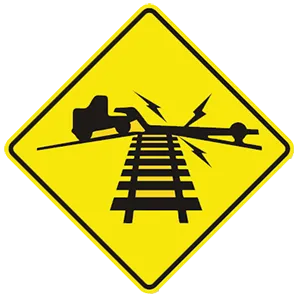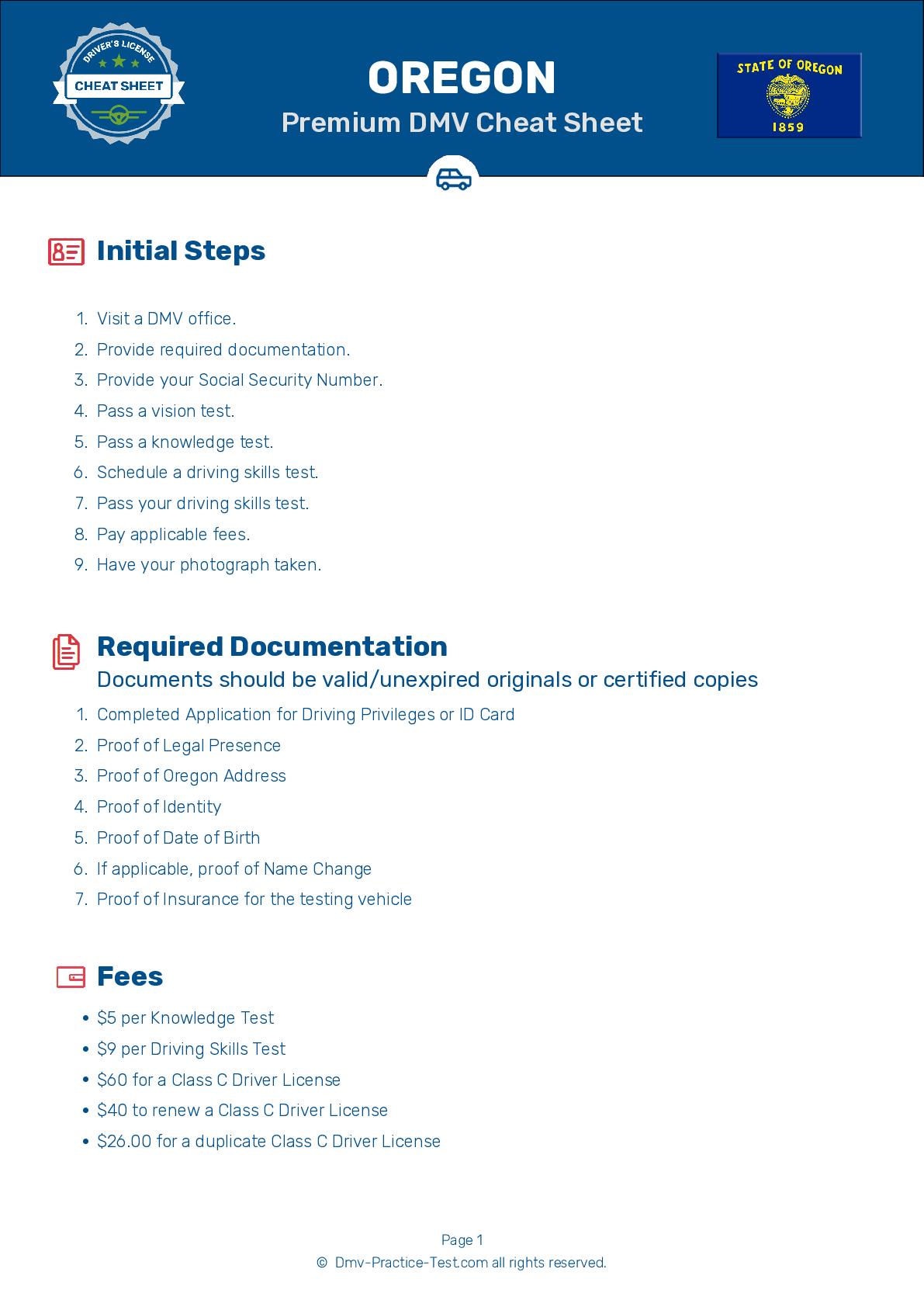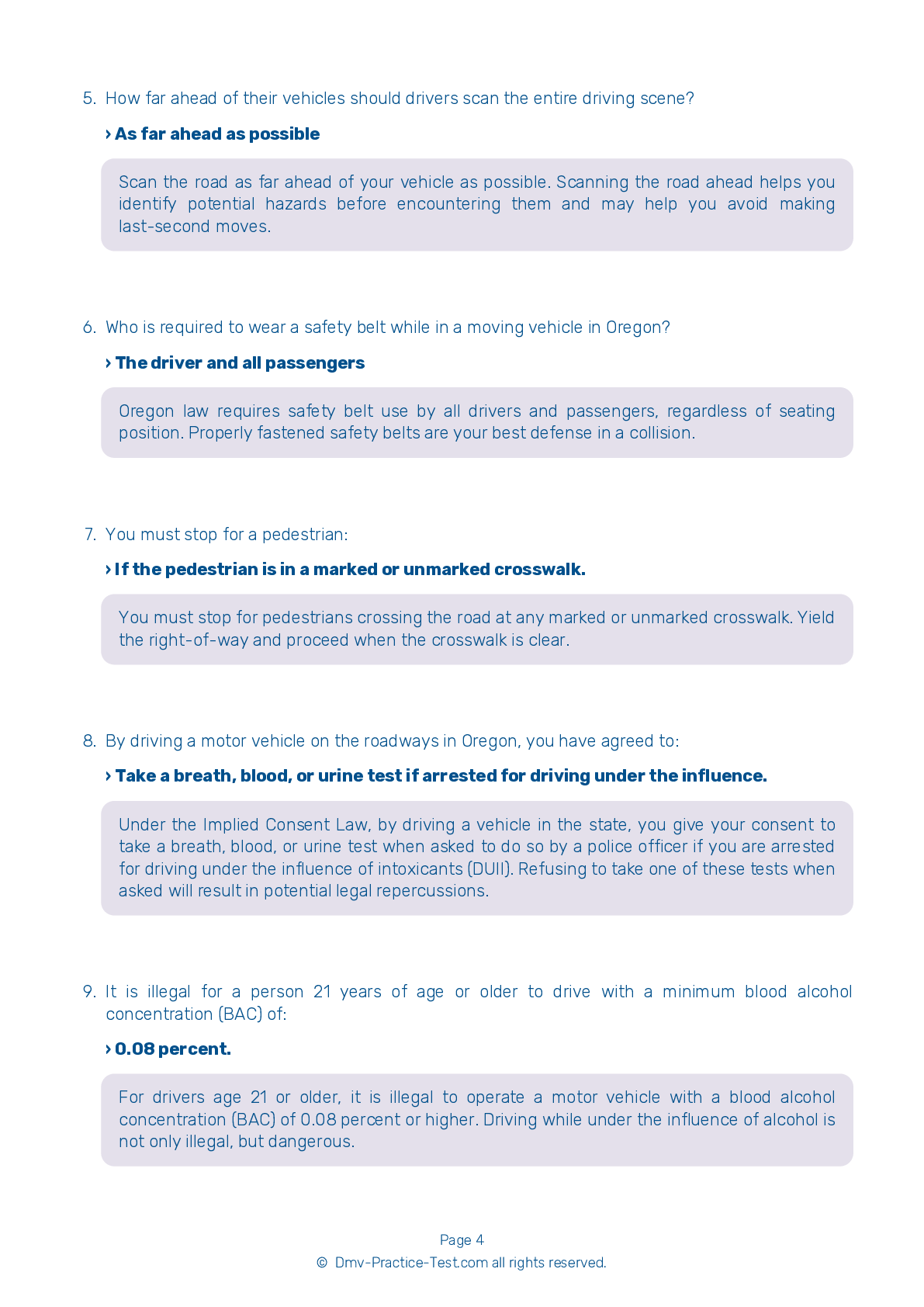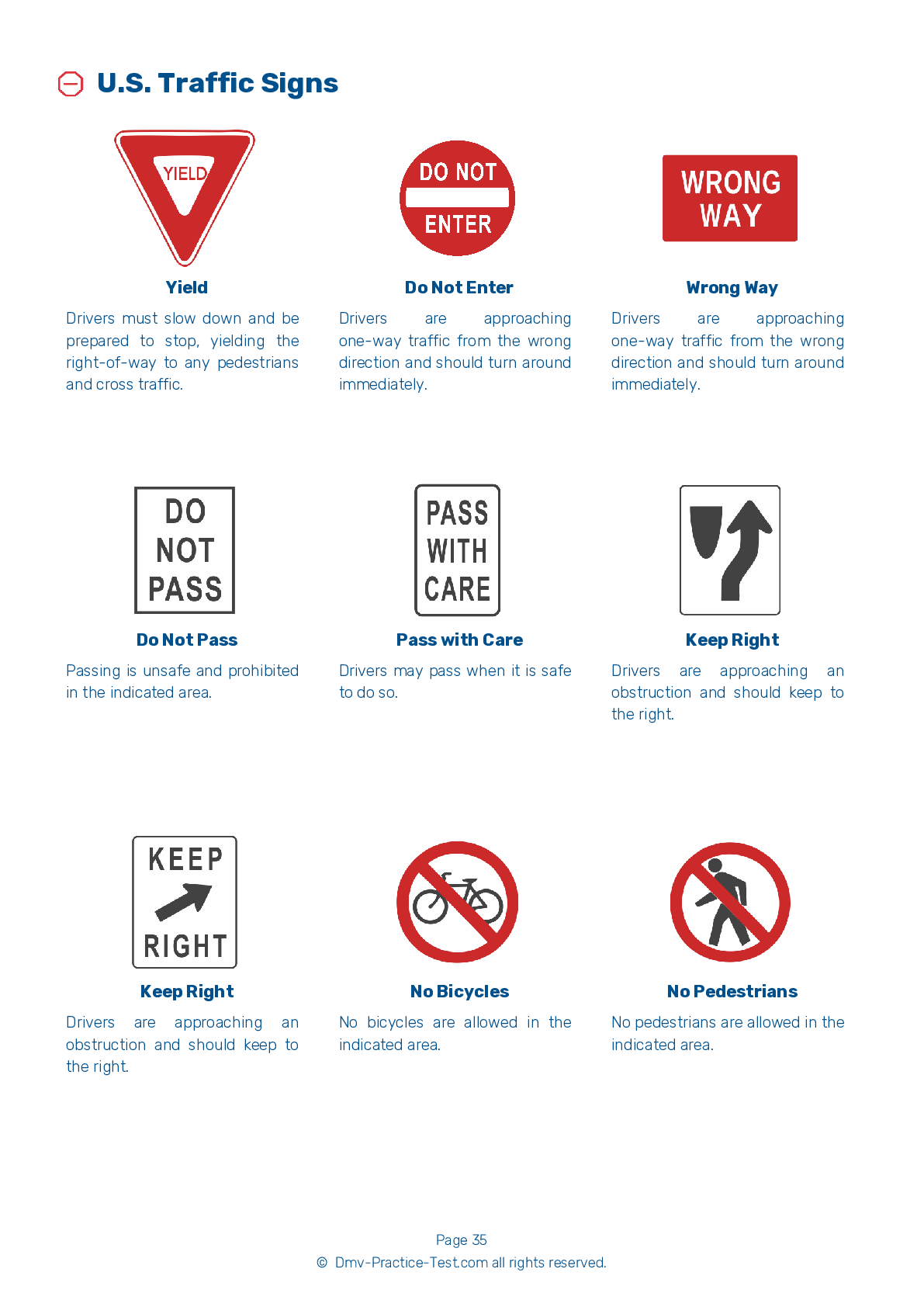FREE Oregon DMV Practice Test #10 Page 5 of 5
The practise exams for the Oregon DMV have been updated for January 2025. It includes questions based on the most important traffic signals and regulations for 2025 from the Oregon Driver Handbook. To study for the DMV driving permit test and driver's licence exam, use actual questions that are very similar (often identical!) to the DMV driving permit test and driver's licence exam.
Each question on the practise exam has a tip and explanation to help you recall the ideas. Questions about traffic rules, traffic signs, and driving statutes, as well as knowledge from the Driver Handbook, will be included in the written portion of the official Oregon DMV test.
You must properly answer 28 of the 35 questions to receive a passing mark. Use the Oregon Department of Motor Vehicles' practise exam to help you prepare for your instruction permit or driver's licence.
The DMV exam is offered in a variety of languages.
Using any form of testing help will result in an automatic fail, and the DMV may take further action against your driver's licence, so avoid it.
29 . If you are driving on the interstate and pass your exit, you should:
Don’t make a last-minute turn into an exit. If you pass your exit, you must go to the next one.
30 . When you approach a railroad crossing without flashing warning signals or crossing gates, you should:
Always be prepared to yield to any oncoming trains before crossing railroad tracks, particularly if there are no lights or gates controlling the crossing. Never start to cross the tracks until there is room for your entire vehicle on the other side of the tracks. Due to the risk of a vehicle stalling, it is not wise to shift gears when crossing railroad tracks.
31 . When you see or hear an emergency vehicle coming, you should:
When driving on a two-lane roadway or undivided highway, you must yield to an emergency vehicle using its lights and/or siren, regardless of the direction from which it is approaching. Immediately drive as near as possible to the right side of the road and stop, taking care not to stop within an intersection.
32 . This sign means:

Warning signs prepare drivers for upcoming road conditions and hazards and are usually yellow and black. This sign tells drivers that a lane is ending and that they should prepare to allow traffic to merge safely.
33 . To be safe when crossing a railroad, you should:
Railroad crossings are always dangerous. Drivers should look and listen for an approaching train coming from either direction before proceeding across the tracks. Watch for signals indicating an approaching train and never proceed until you are certain it is safe to do so.
34 . This road sign means:

This sign indicates a low ground railroad crossing. Where this sign is present, railroad tracks cross the road at a steep slope and the bottom of low vehicles may drag or get caught on the tracks.
35 . If you miss your exit on an interstate expressway:
If you miss your turn or exit, do not back up or try to turn around on the highway. Go to the next exit and safely turn around.
See the exact questions that will be on the 2025 Oregon DMV exam.
99.2% of people who use the cheat sheet pass the FIRST TIME
LT gives us an insight on how the cheat sheet provided her with all the study questions she needed before taking her test.
Joe initially studied with the handbook and failed his test, he eventually found us online, studied and pass his test the first time around.



